Case Study: Leaping Cultures
Intel, based in Santa Clara, California, pioneered the microprocessor in 1971 and now generates $59 billion annually, with 78% from outside the U.S. As the world’s top computer chip maker, it also excels in networking, communications, and next-generation computing for self-driving vehicles. With 106,000 global employees, Intel faces challenges in managing its workforce across numerous countries, including deciding whether to hire local managers or relocate staff from the U.S. or elsewhere, and determining appropriate compensation, which varies globally. Cultural adaptability is key, and Intel provides culture-specific training to enhance employees’ awareness, skills, and effectiveness in cross-cultural business. This training supports employees—from tech support to executives—in navigating international operations and communication, highlighting the human resource complexities of global management.
1. Introduction to International Human Resource Management
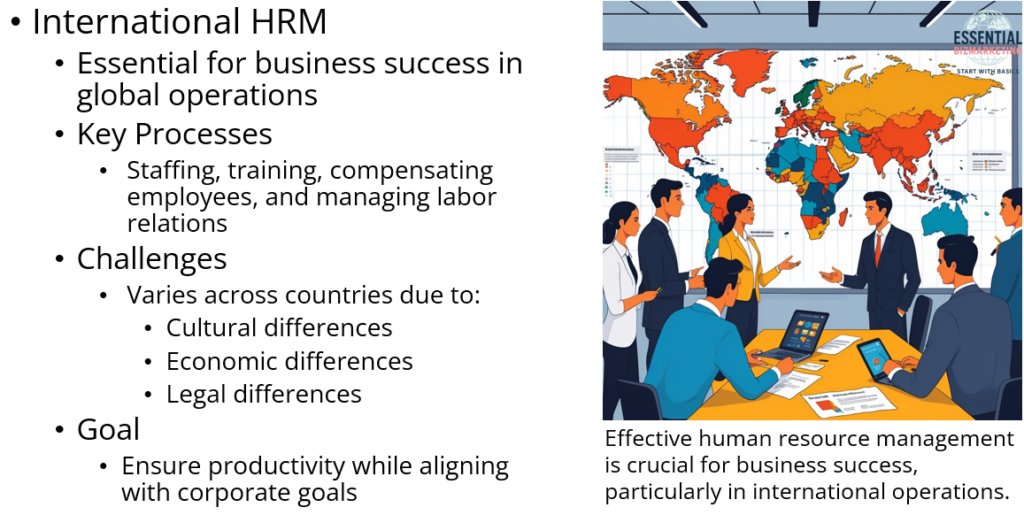
Managing human resources effectively is essential for business success, especially in international operations. International Human Resource Management (HRM) involves the processes of staffing, training, compensating employees, and managing labor relations. These elements vary significantly across countries due to cultural, economic, and legal differences. Companies must carefully manage their employees to ensure productivity while aligning with corporate goals.
2. International Staffing Policies
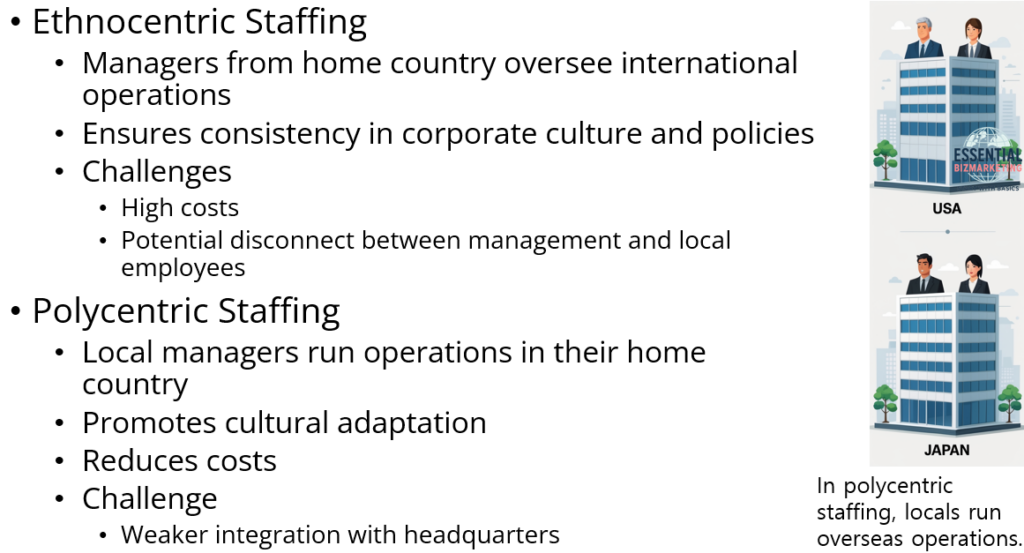
Companies adopt different staffing strategies depending on their level of international involvement. The three main approaches include ethnocentric staffing, where managers from the home country oversee international operations, ensuring consistency in corporate culture and policies. However, this approach is costly and may create a disconnect between management and local employees. Polycentric staffing allows local managers to run operations in their home country, promoting cultural adaptation and reducing costs, though it can lead to weaker integration with headquarters.
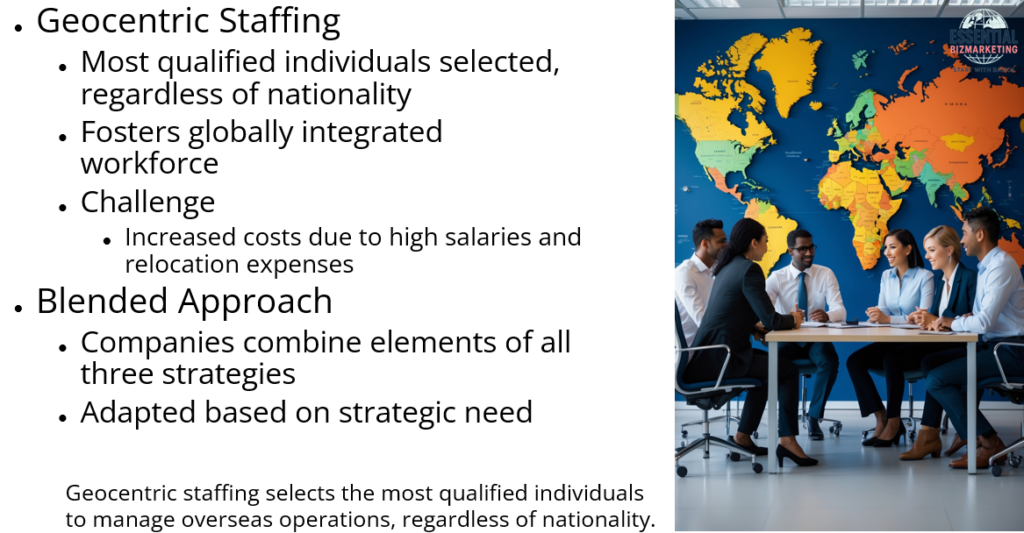
Geocentric staffing selects the most qualified individuals regardless of nationality, fostering a globally integrated workforce but increasing costs due to high salaries and relocation expenses. In practice, companies often blend elements of these approaches based on their strategic needs.
3. Recruiting and Selecting Human Resources
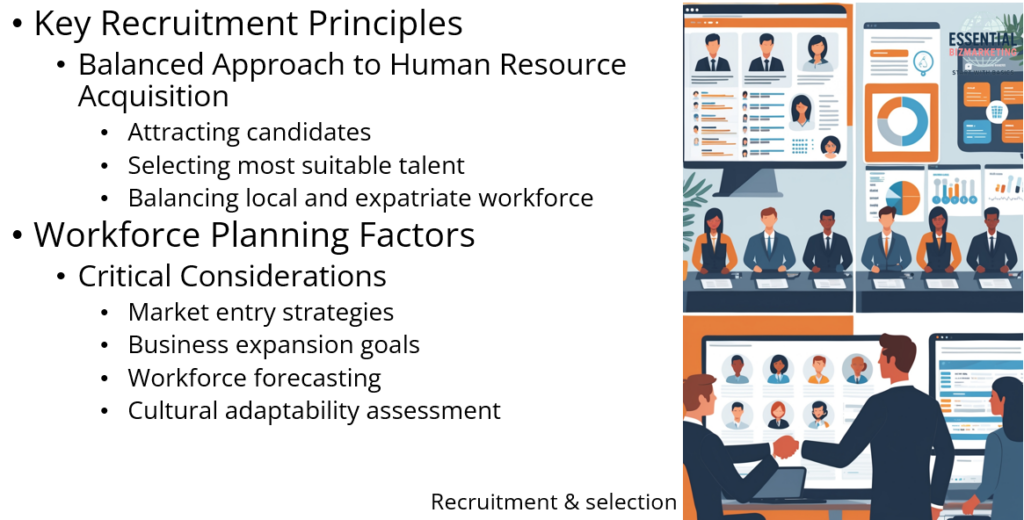
Recruitment involves attracting candidates, while selection ensures hiring the most suitable talent. Companies must carefully balance local hiring with expatriate assignments, taking into account factors such as workforce forecasting, business expansion, and cultural adaptability. Human resource planning helps firms predict workforce needs based on market entry and business growth. Recruitment sources include internal promotions, recent college graduates, local managerial talent, and external labor markets.
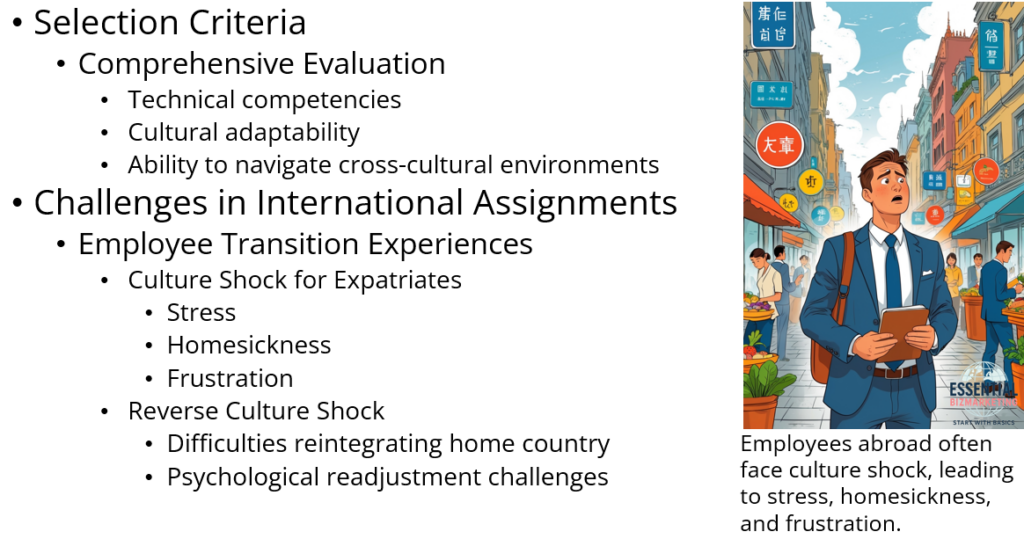
Selection criteria emphasize both technical competencies and cultural adaptability, as expatriates must successfully navigate cultural differences, while local hires must integrate with corporate expectations. Employees moving abroad often experience culture shock, which manifests as stress, homesickness, and frustration. Conversely, expatriates returning home may face reverse culture shock, struggling to reintegrate into their home country. Companies can mitigate these challenges through reorientation programs designed to assist employees in their transition.
4. Training and Development

Training and development programs help employees acquire the necessary skills and cultural awareness for international assignments. Cultural preparation methods vary depending on the company’s global engagement level. Basic training includes environmental briefings and cultural orientations, which introduce employees to local infrastructure, institutions, and customs. More advanced cultural assimilation and sensitivity training teach social etiquette, business norms, and language fundamentals. Employees may also undergo language training to enhance communication skills, particularly for long-term assignments.
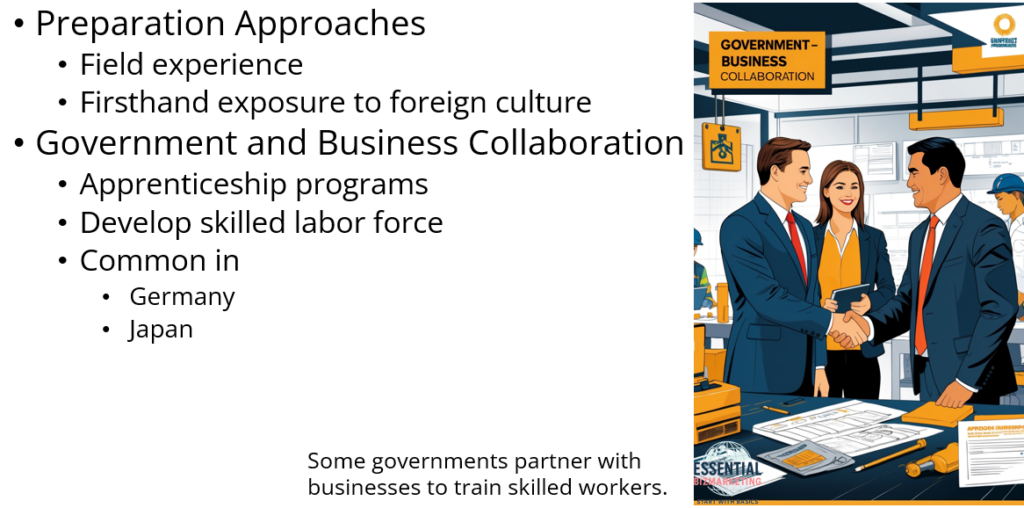
Field experience allows employees to gain firsthand exposure by visiting the foreign culture before relocating. In addition to managerial training, nonmanagerial workers often require technical training, especially in developing markets. Some governments collaborate with businesses to provide apprenticeship programs that develop a skilled labor force, which is particularly common in countries like Germany and Japan.
5. Compensation in International HRM
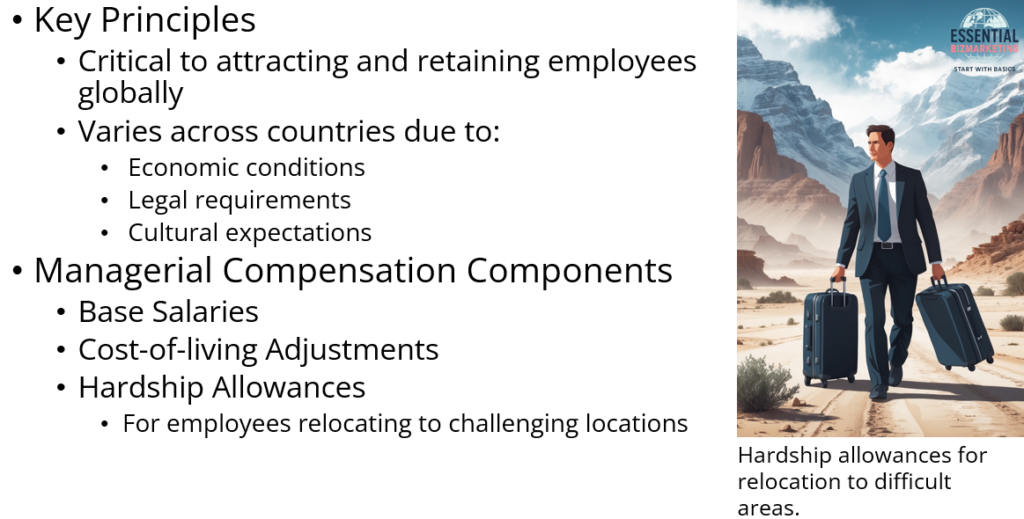
A fair compensation system is critical in attracting and retaining employees. Compensation structures vary across countries due to economic conditions, legal requirements, and cultural expectations. Managerial compensation includes base salaries, cost-of-living adjustments, and hardship allowances for those relocating to challenging locations.
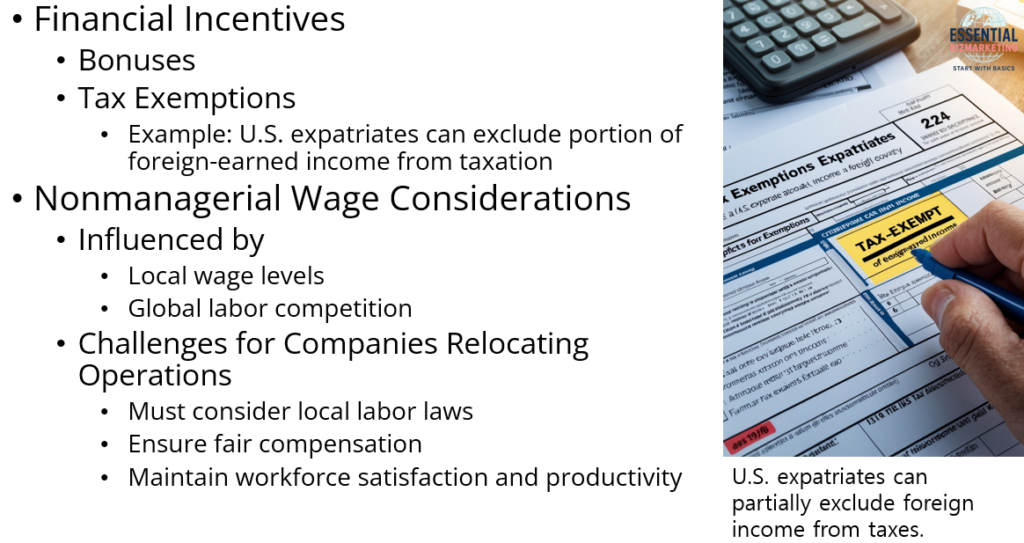
Companies often provide financial incentives such as bonuses or tax exemptions to encourage employees to accept international assignments. U.S. expatriates, for example, may exclude a portion of their foreign-earned income from taxation. Nonmanagerial wages are influenced by local wage levels and global labor competition. Companies relocating operations to lower-cost countries must consider labor laws and ensure fair compensation to maintain workforce satisfaction and productivity.
6. Labor–Management Relations
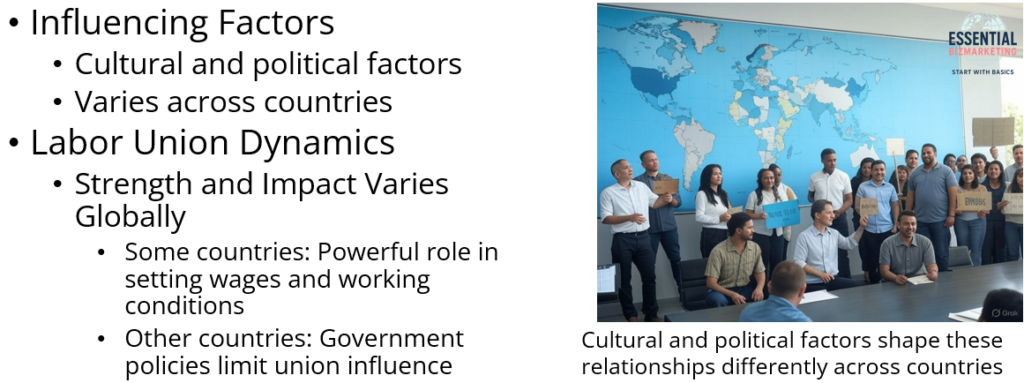
Positive labor-management relations contribute to workplace harmony and organizational success. These relationships are influenced by cultural and political factors and vary across different countries. The strength of labor unions can significantly impact business operations. In some countries, unions play a powerful role in setting wages and working conditions, while in others, government policies limit their influence.

Japan, for instance, promotes cooperation between labor and management, fostering stability. Germany follows a codetermination model, where workers participate in company decision-making, granting them influence over corporate policies.
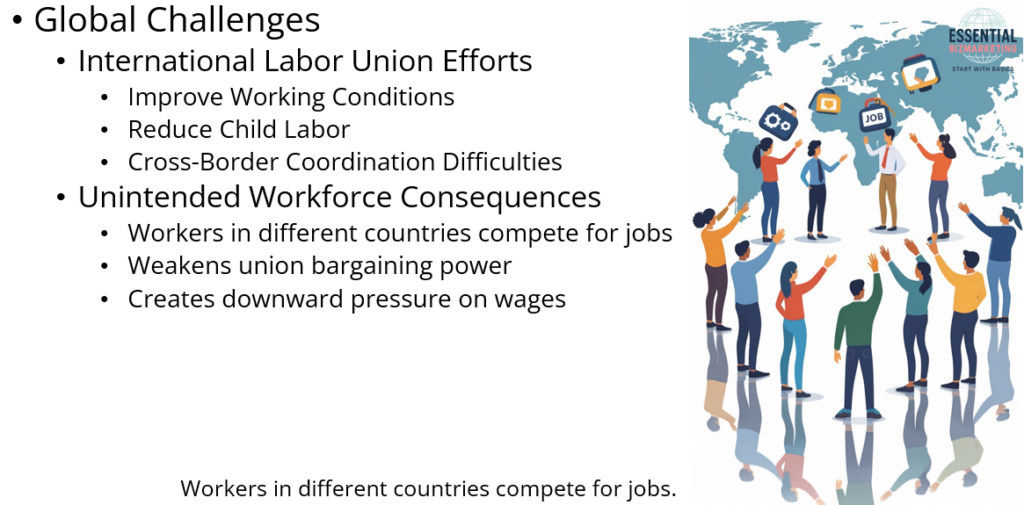
Despite international labor unions striving to improve working conditions and reduce child labor, cross-border coordination remains a challenge. Workers in different countries sometimes compete for jobs, unintentionally weakening union bargaining power and contributing to downward pressure on wages.
7. Conclusion
This chapter underscores the complexities of international human resource management and the importance of cultural sensitivity in global operations. Companies must strategically manage staffing, recruitment, training, compensation, and labor relations to optimize workforce productivity. As globalization continues, businesses must adapt to diverse cultural, legal, and economic environments to remain competitive and successfully manage their human resources worldwide.
Related videos
📚 References
Wild, J. J., & Wild, K. L. (2019). International business: The challenges of globalization (9th ed.). Pearson.
📁 Start exploring the Blog
📘 Or learn more About this site
🧵 Or follow along on X (Twitter)
🔎 Looking for sharp perspectives on global trade and markets?
I recommend @GONOGO_Korea as a resource I trust and regularly learn from.
